Blue Doberman Pinschers are a unique and fascinating breed, known for their striking appearance and loyal nature. In this comprehensive guide, we will delve into the world of these majestic canines, exploring their history, physical characteristics, temperament, training needs, and more. Join us on a journey to discover the beauty and charm of the blue Doberman Pinscher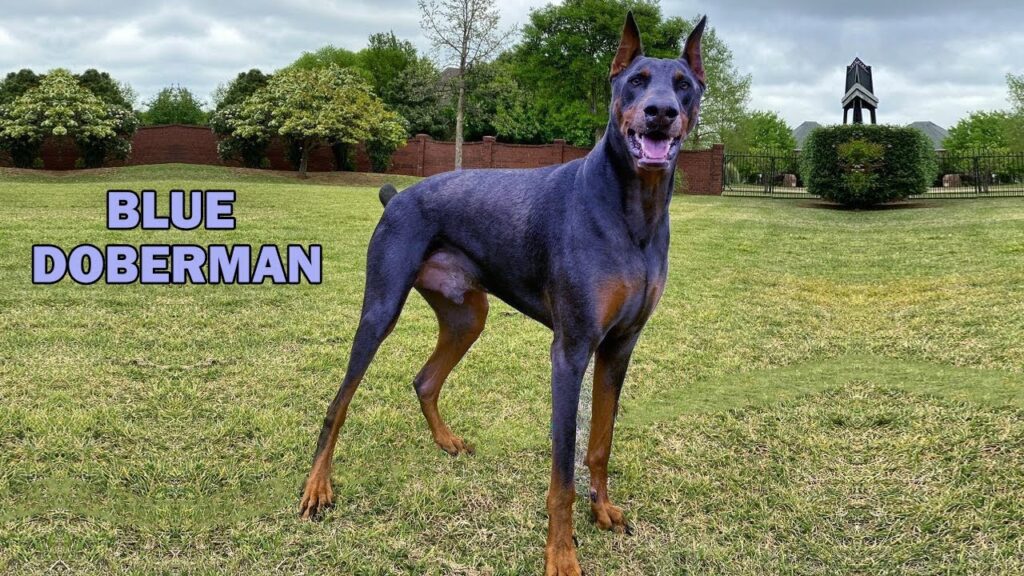
Table of Contents
The Origin and History of Blue Doberman Pinschers
Blue Doberman Pinschers are a rare color variation of the traditional Doberman Pinscher breed. They are often misunderstood due to their unique coloring, but they are just as loving and loyal as their black, red, or fawn counterparts. The blue coloring in Dobermans is the result of a genetic mutation that affects the production of melanin in their fur. Despite their unique appearance, blue Doberman Pinschers have a rich history dating back to the late 19th century in Germany.
The Dobermann, also known as the Doberman Pinscher in the United States and Canada, is a medium-large domestic dog that was created around 1890 by Louis Dobermann, a German tax collector. Karl Friedrich Louis Dobermann, a tax collector who ran the Apolda dog pound, first bred Dobermanns in the 1880s in Apolda, Thuringia, Germany.
He came up with the idea of creating a breed that would be ideal for protecting him because he had access to dogs of various breeds. He set out to create a new breed of dog with exceptional endurance, strength, and intelligence. Otto Goeller, who founded the National Doberman Pinscher Club five years after Dobermann’s death, is credited with perfecting the breed by breeding and refining them in the 1890s.
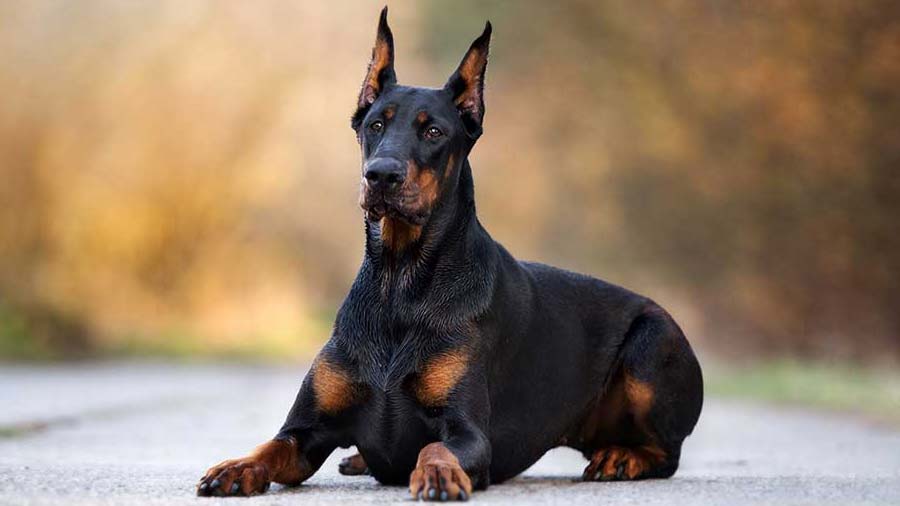
The breed is thought to have evolved from several different dog breeds that shared the characteristics that Dobermann desired. Although many experts believe the Dobermann Pinscher is a mix of several breeds, including the Beauceron, German Pinscher, Rottweiler, and Weimaraner, the exact ratios of mixing and even the exact breeds used are unknown.
The documented crossing with the Greyhound and Manchester Terrier is the only exception. The old German Shepherd is also thought to have been the single most important contributor to the Dobermann breed. The American Kennel Club believes the old shorthaired shepherd, Rottweiler, Black, Tan Terrier, and German Pinscher were among the breeds used to develop the Dobermann Pinscher.
Following Dobermann’s death in 1894, the Germans gave the breed the name Dobermann-pinscher. The Doberman Pinscher was adopted as the official war dog of the United States Marine Corps during World War II. The American Kennel Club ranked the Doberman Pinscher as the 12th most popular dog breed in the United States in 2012 and 2013.
Dobermanns are the 16th most popular dog breed, according to the American Kennel Club’s 2017 ranking. When Dobermanns were used as guard dogs during World War II, they became popular. The Dobermann Pinscher was officially recognized as a breed by the German Kennel Club in 1900. The Dobermanns pinscher arrived in the United States around 1908.
Doberman Pinscher Physical Characteristics
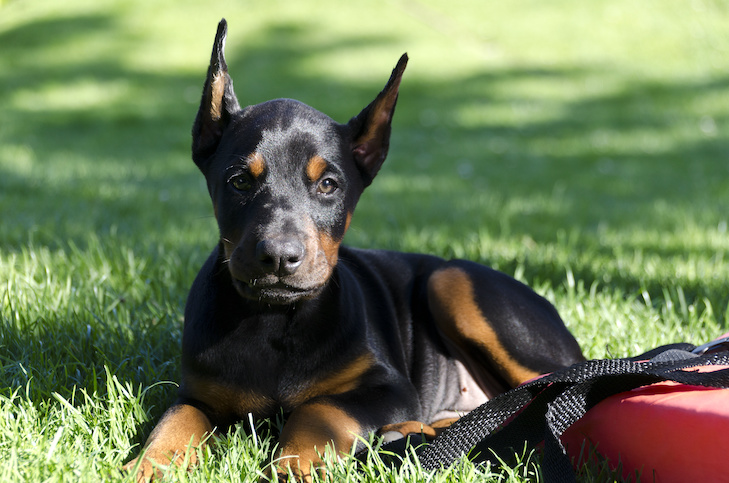
Dobermann Pinscher is a medium-sized dog with a strong and muscular build. Males are usually muscular and intimidating in appearance. Females are typically slimmer than males. The Dobermann has a square frame; its length to the withers is equal to its height, and the length of its head, neck, and legs are proportionate to its body.
Blue Doberman Pinschers are known for their sleek, muscular build and elegant appearance. They have a short, smooth coat that comes in various shades of blue, ranging from light silver-blue to dark charcoal. Their distinctive markings and cropped ears give them a regal and imposing presence. These dogs are medium to large in size, with males typically weighing between 75-100 pounds and females weighing between 60-90 pounds.
Male dogs’ ideal weight is described as 40–45 kilograms, while female dogs’ ideal weight is described as 32–35 kilograms. Male dogs stand between 68 and 72 centimeters (27 and 28 inches) tall at the withers. Female dogs are between 63 and 68 centimeters tall (25 to 27 in).
The Dobermann pinscher natural tail is fairly long, but due to docking, individual dogs often have a short tail. Dobermanns’ ears are frequently cropped. The Doberman pinscher has two color genes: one for black and one for color dilution. Black, red, blue, and fawn are the colors of their coats. Rust markings can be found above each eye, on the muzzle, throat, and chest, as well as on the legs and feet.
Doberman Pinscher Behavior
Doberman pinschers are known for their calm and pleasant temperament, as well as their extreme loyalty, intelligence, and trainability. Dobermanns are known to be energetic, watchful, fearless, and obedient in modern times. Many people consider them to be excellent guard dogs because they can easily learn to respect and protect their owners.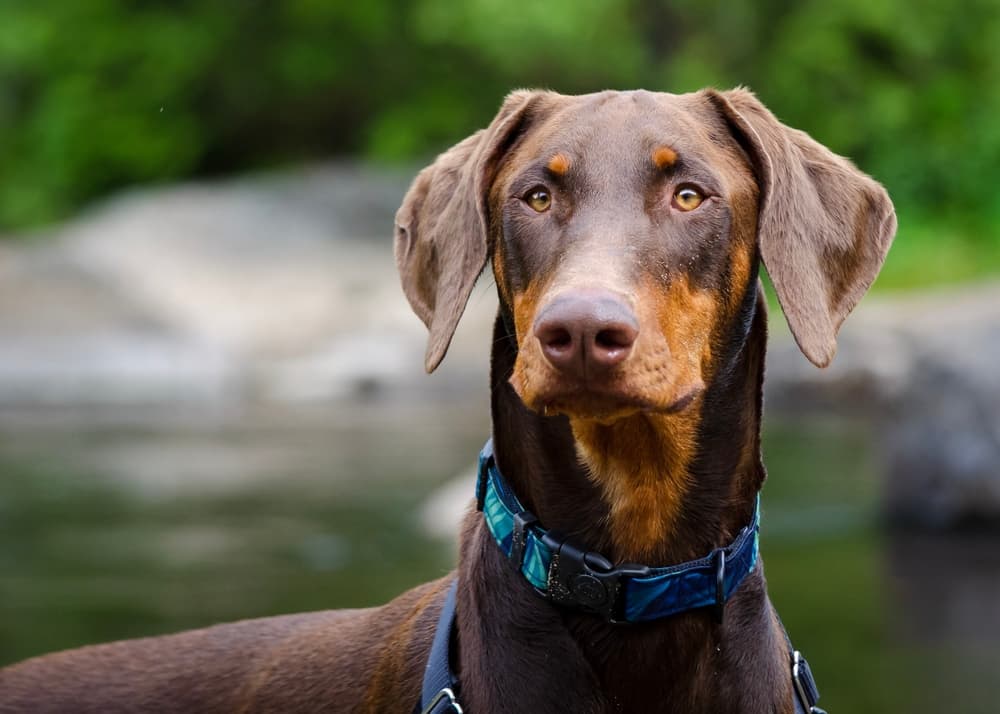
They are generally sociable toward familiar humans and can also be sociable with other dogs if properly socialized from a young age. Doberman Pinscher, on the other hand, is among the breeds that are more likely to be aggressive toward strangers and other dogs.
Temperament and Personality Traits
Blue Doberman Pinschers are intelligent, affectionate, and fiercely loyal to their families. They are known for their protective nature and strong bond with their owners. While they may appear intimidating to strangers, blue Dobermans are usually friendly and sociable, especially when properly socialized from a young age. They thrive on human companionship and enjoy being part of a loving home environment.
Training and Exercise Needs
Blue Doberman Pinschers are highly intelligent and eager to please, making them relatively easy to train. However, they require consistent and firm leadership to prevent them from becoming dominant or stubborn. Daily exercise, such as brisk walks, runs, or play sessions, is essential to keep these energetic dogs physically and mentally stimulated. Obedience training and socialization are also crucial for raising a well-behaved and well-adjusted blue Doberman Pinscher.
Doberman Pinscher Training and Caring
The Doberman pinscher enjoys being active, both physically and mentally. They are easy to train and learn quickly. It’s difficult to keep lessons fresh and interesting for them because they learn so quickly. Requires early socialization, which includes exposure to a variety of people, sights, sounds, and experiences. Socialization and obedience training should begin as early as puppyhood.

They are powerful dogs who, if not properly raised, can become obnoxious, destructive, and uncontrollable. The Doberman is an active dog who requires a lot of exercises and free time. A Doberman pinscher will enjoy going for long walks or hikes on a daily basis. Grooming isn’t necessary for the dog’s coat. They’re squeaky-clean dogs with a slight odor. Brushing with a grooming brush on a weekly basis is satisfactory.
Doberman Pinscher Health
Like all dog breeds, blue Doberman Pinschers are prone to certain health issues, including hip dysplasia, heart problems, and bloat. It is important to work with a reputable breeder who conducts health screenings and genetic testing to minimize the risk of hereditary diseases. Regular veterinary check-ups, a balanced diet, and proper exercise are essential to ensure the health and longevity of your blue Doberman companion.
Dobermans are relatively healthy dogs, but they are prone to certain diseases. Hip dysplasia, bloat, dilated cardiomyopathy, a clotting disorder (von Willebrand’s disease), progressive retinal atrophy, albinism, and hypothyroidism are all genetic health conditions that can affect the breed. The average lifespan of a Dobermann is 10–13 years.
RECOMMENDED ARTICLES
- German Pinscher – 7 Exclusive Physical Characteristics, Behaviour And Health
- Greater Swiss Mountain Dog – Characteristics, 6 Comprehensive Behaviour And Health
- German Rottweiler Dog: – 5 Best Known Facts and Personality Traits
- Beauceron Puppies – 6 Amazing Beauceron Puppies Facts and Information
In conclusion, the blue Doberman Pinscher is a magnificent breed with a unique combination of beauty, intelligence, and loyalty. Whether you are considering adding one to your family or simply curious about this captivating canine, we hope this guide has provided valuable insights into the world of blue Doberman Pinschers. Remember, a blue Doberman can make a wonderful companion for the right owner who understands their needs and is committed to providing them with love, care, and guidance.
Join the blue Doberman Pinscher club today and experience the joy of sharing your life with one of the most extraordinary breeds in the canine kingdom!

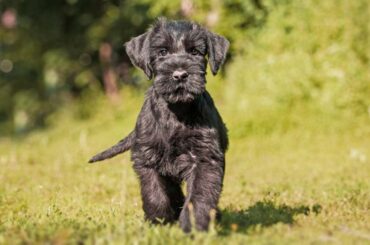
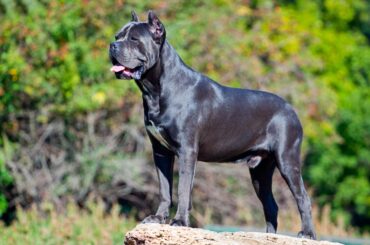


11 Comments
Blue Doberman Pinschers are absolutely stunning! That unique coat color really sets them apart from other breeds.
I’ve always been drawn to Blue Dobermans. Their sleek build and striking blue coat make them quite the head-turner!
I’m considering adding a Blue Doberman to my family, and I’m curious about their temperament. Any Blue Doberman owners out there willing to share their experiences?
I had the pleasure of meeting a Blue Doberman recently, and I was amazed by their gentle demeanor and striking appearance. They truly stand out in a crowd!
I’ve heard that Blue Dobermans are not only beautiful but also highly trainable. It’s amazing how they combine elegance with athleticism.
As a dog lover, I’ve done some research on different breeds, and the Blue Doberman Pinscher always catches my eye. Their sleek, muscular build is so impressive.
I’ve seen a few Blue Dobermans at dog shows, and they always leave me in awe. Their confident stance and regal presence make them a breed apart.
I’ve heard that Blue Dobermans are known for their affectionate nature towards their family members. It’s heartwarming to see such a strong bond between them and their owners.
The Blue Doberman Pinscher is definitely on my list of dream dogs! Their striking appearance and loyal disposition make them the perfect companion for an active lifestyle
I’ve seen some amazing photos of Blue Dobermans in action, whether it’s during agility training or simply enjoying a day out with their owners. They’re truly magnificent animals.
“I’ve read that Blue Dobermans are not only great family pets but also excel in various canine sports. Their athleticism and intelligence make them versatile companions for any dog enthusiast.